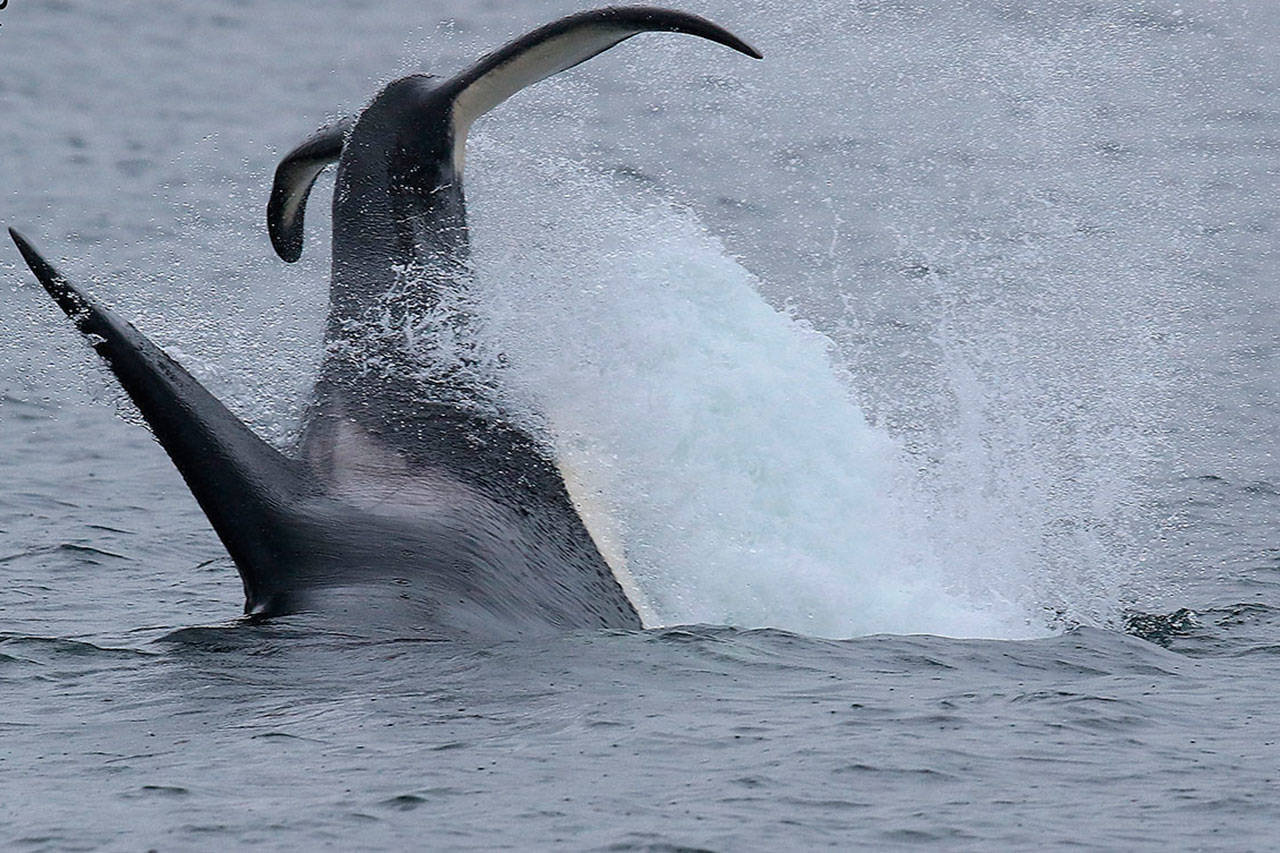Although the whale-on-whale attack witnessed recently south of Whidbey Island garnered much attention, it’s really the location of the incident — not the behavior of the marine mammals — that’s most surprising, some experts say.
“It is unusual to see transients (orcas) feeding on gray whales in the inland waters, though we have had some ramming of our local grays by transient orcas in the past,” said Susan Berta, Orca Network executive director. “For the transients, gray whales are a part of their diet, along with the plentiful seals, sea lions, porpoises and other whales.”
Last Saturday, Puget Sound Express passengers and crew on a whale-watching excursion witnessed a pod of transient orcas feed on a gray whale. While they couldn’t immediately determine if the pod had attacked and killed the whale, a study of the photos taken by on-board naturalist Bart Rulon showed signs that the gray whale had probably been dead for several days, Berta said.
Transient orcas, also called killer whales, differ from the local Puget Sound orcas that primarily eat salmon.
Pete Hanke, owner of Puget Sound Express, said two of the company’s vessels were the only boats west of Cultus Bay when they came upon a group, known as family T101 circling some sort of prey.
“We had seen this same family an hour and a half beforehand just a few miles southeast at Possession Point on our first whale watching trip of the day, and they were spread out in a typical hunting pattern,” Hanke said.
A body of a gray whale floated to the surface where the killer whales was diving, then “a bunch of air with fresh blood bubbled out of the gray whale carcass,” Hanke stated in a press release.
“Then the whale slowly sank under the water again while the T101s continued to work on their meal.”
“This, in my opinion, is one of the most unusual events I can recall with a killer whale in 34 years of whale watching in the Salish Sea,” Hanke said.
Transient killer whales are known to attack gray whale calves as they migrate with their mothers north from birthing lagoons in Baja, Mexico to their Alaskan feeding grounds. But such attacks have largely been witnessed in California’s Monterey Bay as the gray whales traverse the bay’s deep-water canyon, considered the riskiest stretch of their 10,000-mile migration.
Rulon also described the incident “as one of the most unusual encounters I’ve had with our whales in more than two decades of documenting them.”



